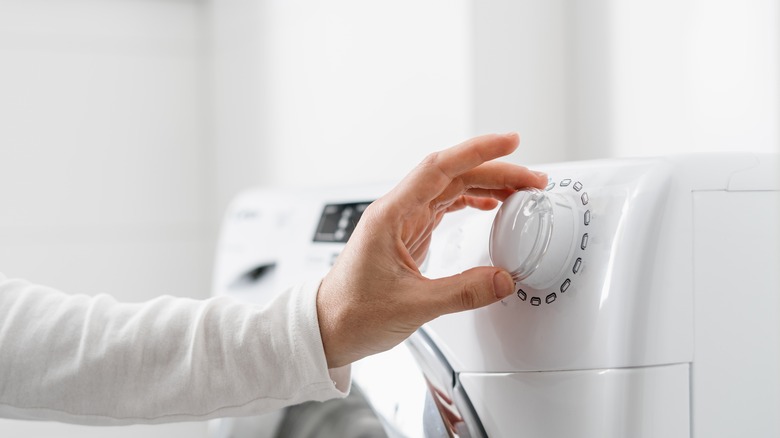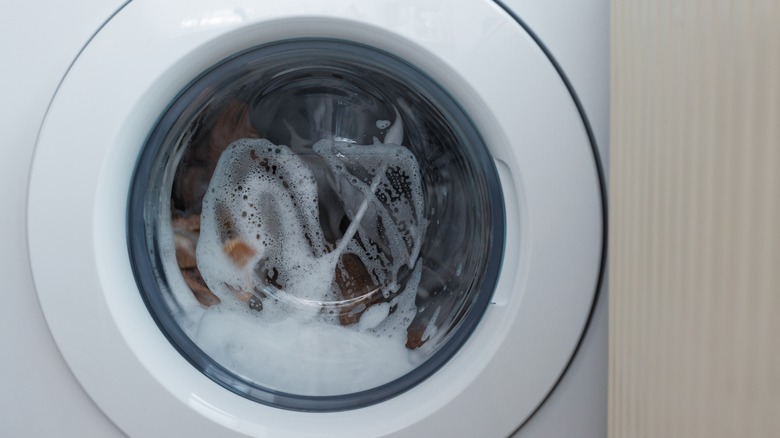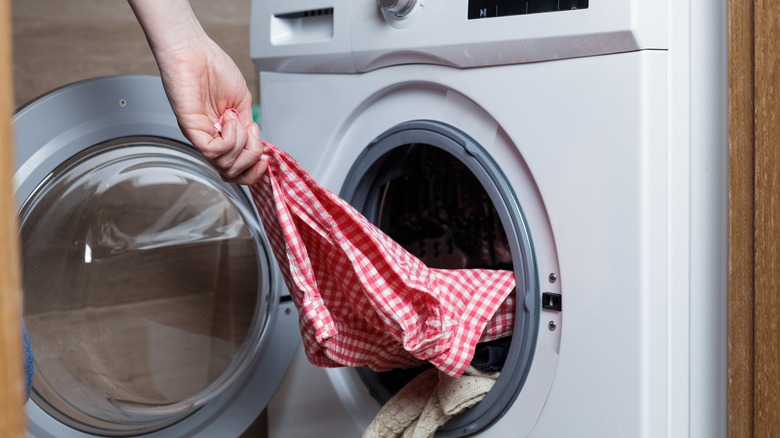Here's When You Should Really Use The Quick Wash Laundry Feature
During a busy week or fun-filled weekend, it's not uncommon to forget to do your laundry. When this happens, you may think that you'll either have to stay up late to get it done or be faced with no suitable clothes to wear in the upcoming days. Sometimes, however, you or your child need a specific shirt or pair of pants for work, a sporting event, or a school function. At times like these, the quick wash laundry feature can be a godsend. However, the truth is that you shouldn't make using this feature a regular habit. The quick wash setting should only be used for smaller loads and clothes that aren't extremely dirty or stained.
Even though washing machines come with multiple laundry machine settings, it's easy to get stuck in a rut and keep using what we think works best for us. For instance, if you tend to put off cleaning your clothes until you don't have much time, you may constantly use the quick wash laundry cycle. However, this is something many people get wrong when doing laundry. Instead, for everyday use, you should use a normal cycle, which tends to run anywhere from 50 minutes to an hour depending on your specific washing machine.
How a quick wash cycle works
A quick wash cycle is designed to do just what it says: It gets your clothes cleaned in a shorter amount of time. While normal wash cycles take longer and jostle your clothes at a slower rate, the quick wash cycle cuts back on this tumbling time while increasing the speed during the spin cycle. Some machines can run a whole quick wash cycle in as little as 15 minutes, though they could also take up to 40 minutes.
However, not everyone relies on the quick wash cycle just to save time, as another main purpose is for efficiency, including water and energy usage. These cycles use considerably less water compared to regular cycles, so you get faster wash times due to the fact that less water fills the machine and less energy is used. Since it does reduce the amount of water and length of electrical use, it's easy to see how this feature can be attractive to potentially lower energy bills. However, there are some downfalls of using it every time you do laundry, though there are also certain times when a quick wash cycle is ideal.
When to use and avoid a quick wash cycle
While the quick wash cycle can be a lifesaver, it should only be used under certain circumstances. With a shorter wash time and less water, it won't deeply clean your clothes, so reserve it for items that are lightly-soiled or haven't been worn much. You'll also need to use less detergent, since the load will be smaller and the rinse cycle is shorter. This means that clothes that are heavily-soiled with stains, grease, or grime will not get thoroughly cleaned in this cycle. For tough laundry stains, use a regular cycle or better yet, a heavy-duty wash cycle.
You should also only use a quick wash on small loads. If you need a certain outfit and are in a time crunch or if you're washing items you've just purchased from the store, this feature is ideal. However, always check care labels because a delicate piece of clothing can be damaged in the high-speed spin. For instance, anything with details like beads or sequins or a piece that's made out of a fabric like silk shouldn't be used in a quick wash cycle. Further, to ensure a good clean, aim to wash only half a load or less with the quick wash setting. Cramming too many clothes into the machine can lead to poor cleaning results, as the detergent and water won't be able to circulate as they should and clothes won't have enough time to get fully clean.


